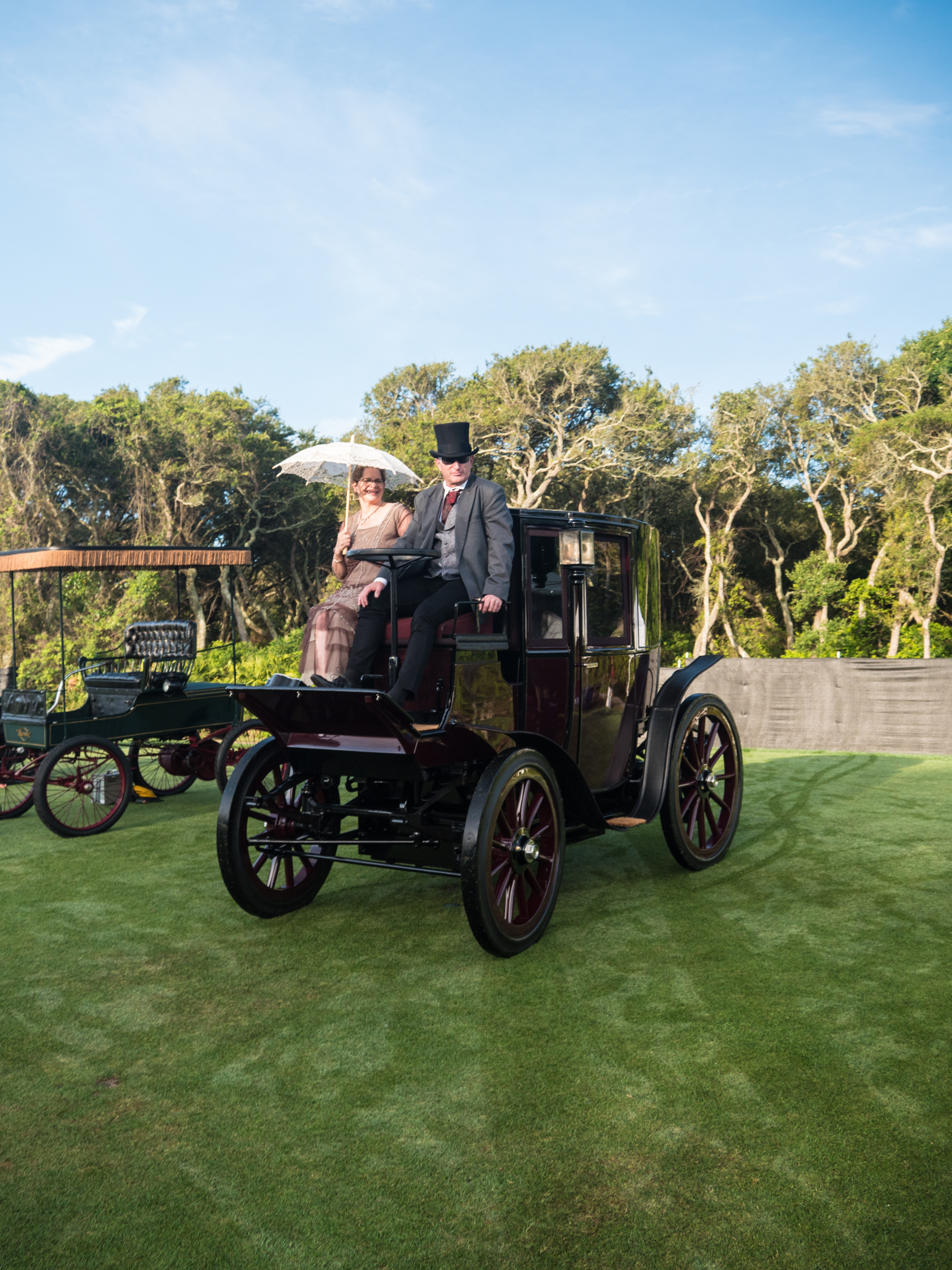 This is a 1905 Columbia XXXV Open Drive Brougham, which won best in class for the EVs. This Edwardian monster is a twin-motor design.Jonathan Gitlin
This is a 1905 Columbia XXXV Open Drive Brougham, which won best in class for the EVs. This Edwardian monster is a twin-motor design.Jonathan Gitlin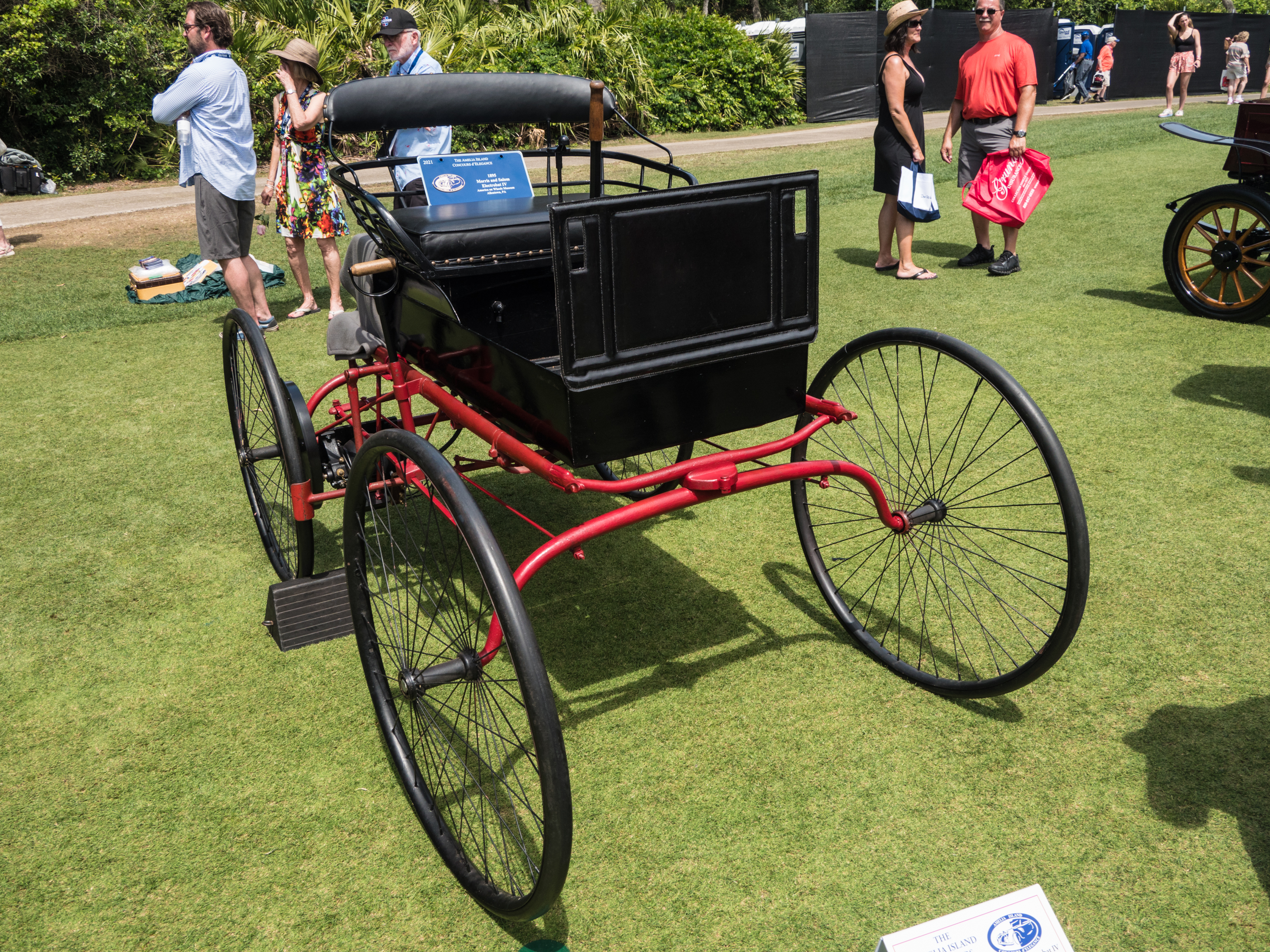 The Electrobat IV from 1895 is one of the first EVs built in the US, and it really looks like it's missing a horse.Jonathan Gitlin
The Electrobat IV from 1895 is one of the first EVs built in the US, and it really looks like it's missing a horse.Jonathan Gitlin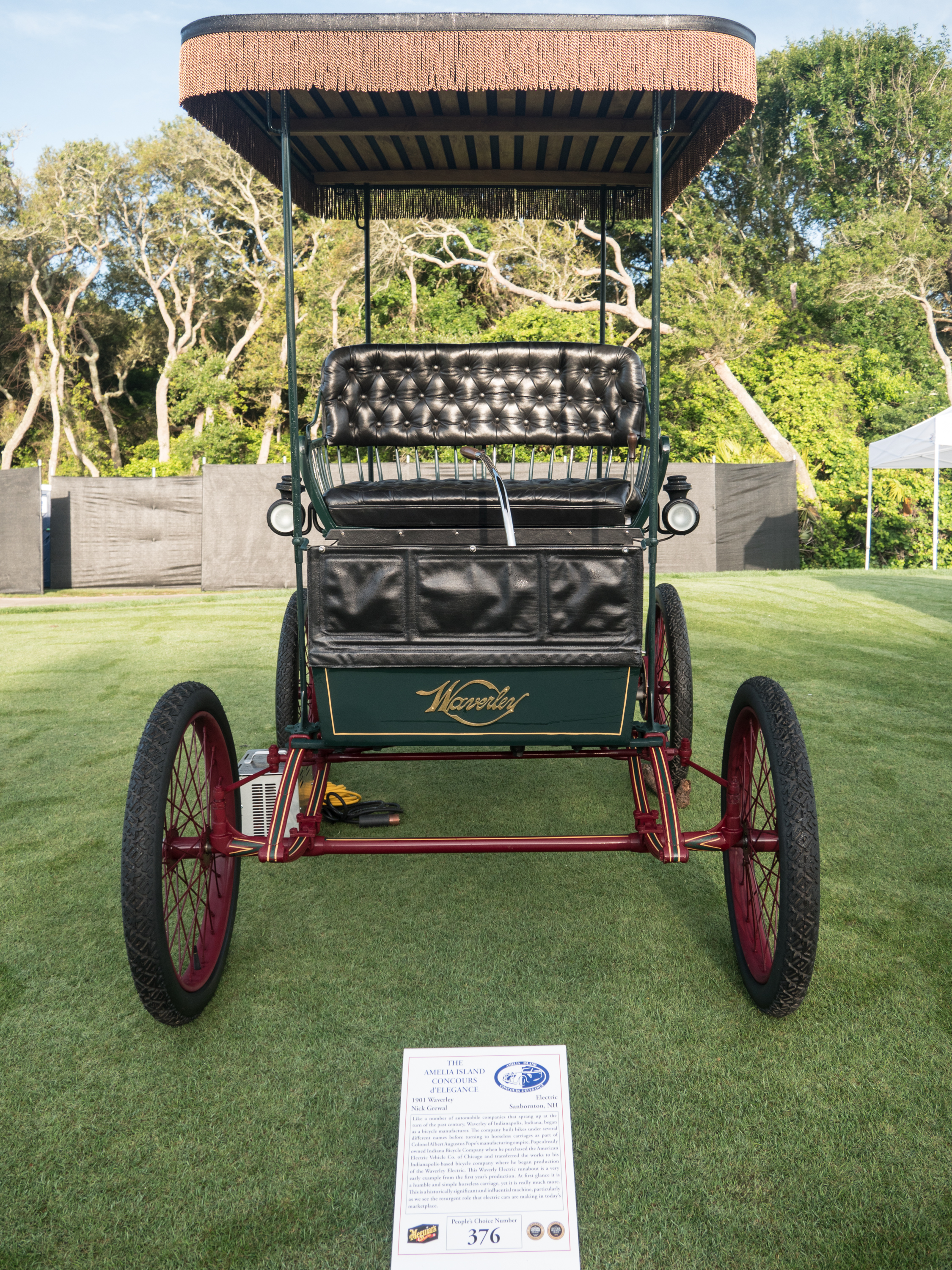 Six years later, the horse still appears conspicuous by its absence when you look at a 1901 Waverley Electric.Jonathan Gitlin
Six years later, the horse still appears conspicuous by its absence when you look at a 1901 Waverley Electric.Jonathan Gitlin But a horse-drawn buggy doesn't need instruments, does it?Jonathan Gitlin
But a horse-drawn buggy doesn't need instruments, does it?Jonathan Gitlin A closer look at the Waverley's motor.Jonathan Gitlin
A closer look at the Waverley's motor.Jonathan Gitlin Within a decade, Waverley had progressed to this Four-Passenger Coupe. This is recognizably a car, I think.Jonathan Gitlin
Within a decade, Waverley had progressed to this Four-Passenger Coupe. This is recognizably a car, I think.Jonathan Gitlin This is a 1909 Baker Victoria Roadster.Jonathan Gitlin
This is a 1909 Baker Victoria Roadster.Jonathan Gitlin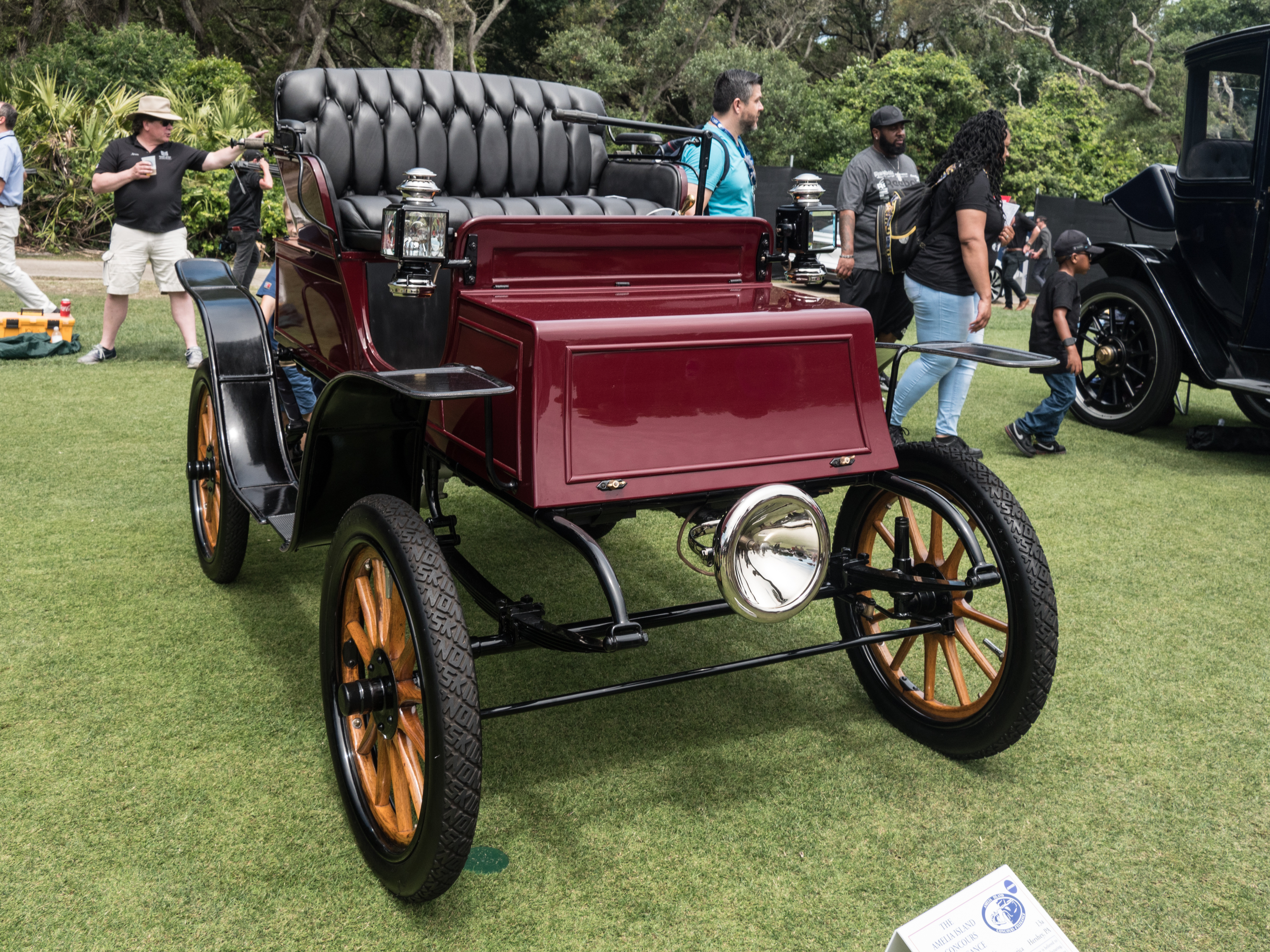 Also from 1909, a Studebaker Electric 13aJonathan Gitlin
Also from 1909, a Studebaker Electric 13aJonathan Gitlin The Studebaker's dashboard, such as it is.Jonathan Gitlin
The Studebaker's dashboard, such as it is.Jonathan Gitlin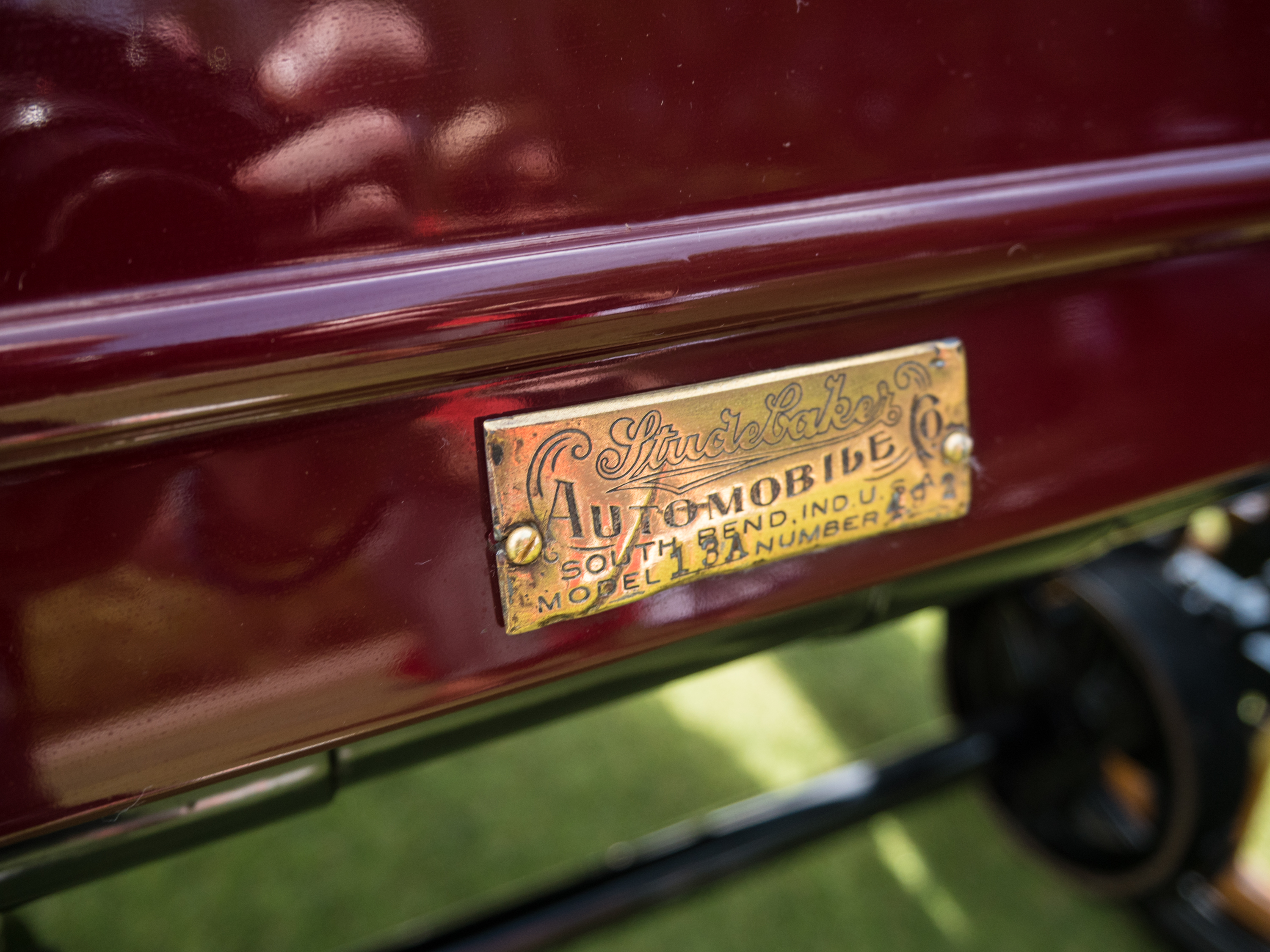 The Studebaker's chassis plateJonathan Gitlin
The Studebaker's chassis plateJonathan Gitlin This is a 1912 Woods 1316 Extension Brougham.Jonathan Gitlin
This is a 1912 Woods 1316 Extension Brougham.Jonathan Gitlin The 1921 Milburn Light Electric might be my favorite of the ancient EVs on display at Amelia Island.Jonathan Gitlin
The 1921 Milburn Light Electric might be my favorite of the ancient EVs on display at Amelia Island.Jonathan Gitlin Just check out this interior! I'm not sure the left-side jump seat would be usable if you were driving, though.Jonathan Gitlin
Just check out this interior! I'm not sure the left-side jump seat would be usable if you were driving, though.Jonathan Gitlin The Milburn's charging port.Jonathan Gitlin
The Milburn's charging port.Jonathan Gitlin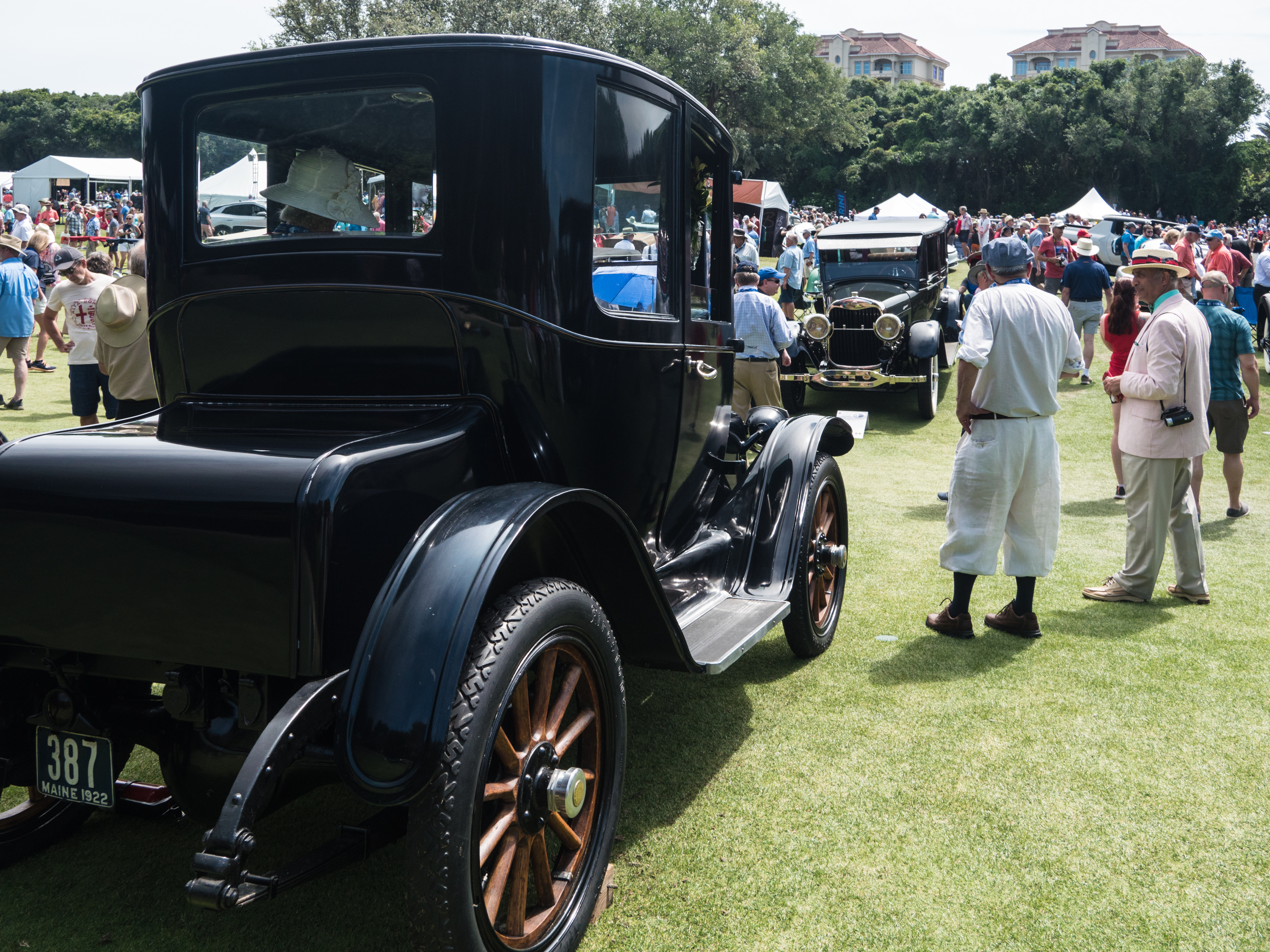 Another car from 1922, this time a Detroit Electric 90.Jonathan Gitlin
Another car from 1922, this time a Detroit Electric 90.Jonathan Gitlin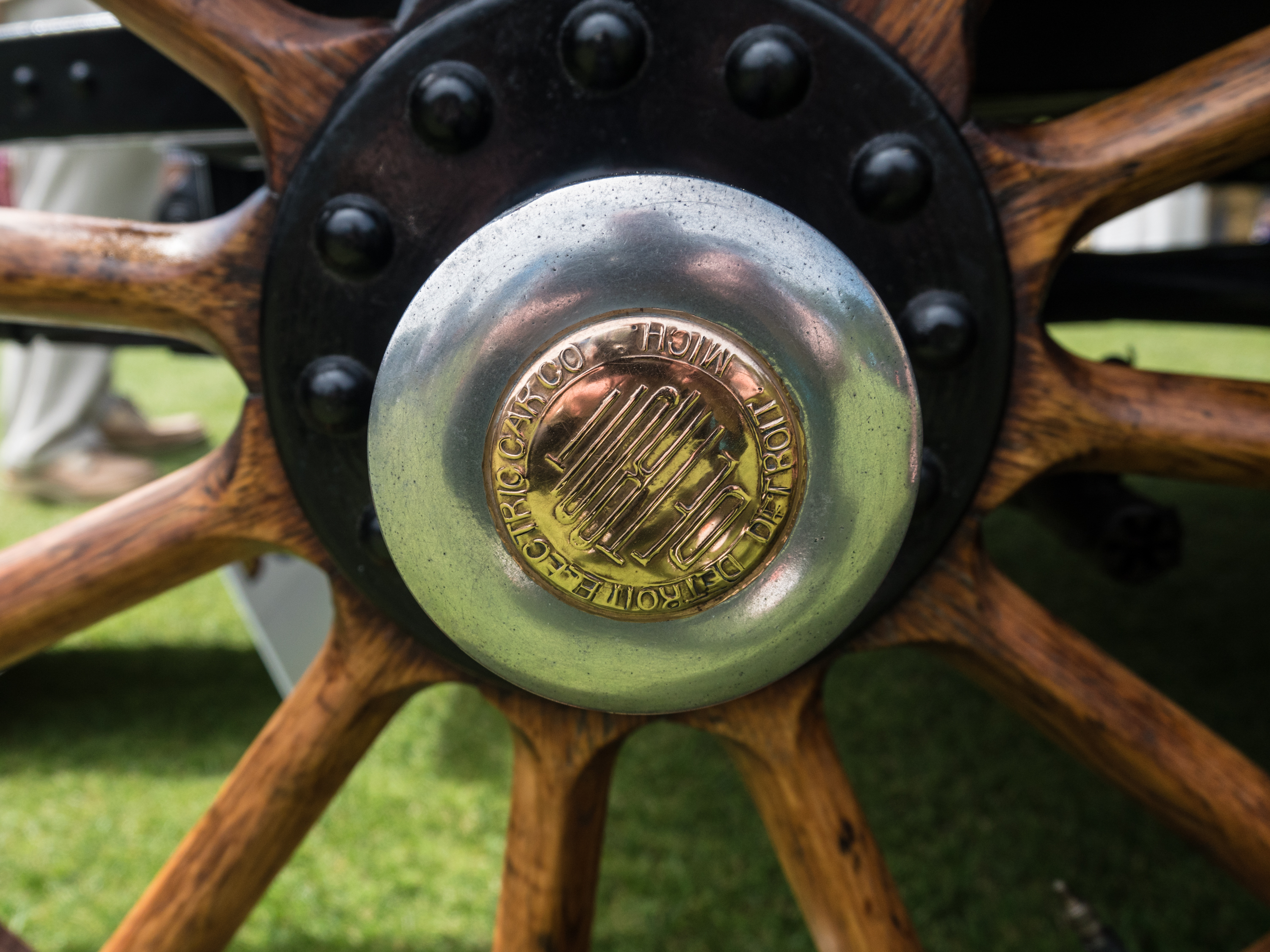 The Detroit Electric's hubcap.Jonathan Gitlin
The Detroit Electric's hubcap.Jonathan Gitlin
AMELIA ISLAND, FLORIDA—It's rare to see an electric vehicle among the polished and restored vintage cars of a concours d'elegance. (That's French for a very fancy car show.) And that's despite the fact that electric power was a credible alternative to the internal combustion engine for the first few decades of the automobile. But this year's Amelia Island Concours d'Elegance went some way to rectifying that. Under the oppressive humidity, nestled between the usual concours fare of interwar phaetons and a wonderful assortment of Porsche 935s, there was an entire class of ancient EVs on display.
And what a varied class it was. A marvelously named Electrobat IV 1895 was the oldest EV to take to the well-manicured golf course. They were still in the earliest stages of figuring out this whole automobile thing 126 years ago, and the Electrobat IV, running on skinny buggy tires, still looks like it's missing its horse. But the real innovation that Pedro Salem and Henry Morris came up with for the Electrobat was its electric powertrain, consisting of a 1.5 hp (1.1 kW) motor and a 350 lb (159 kg) battery. They went on to build a fleet of Electrobat taxis that operated in New York at the beginning of the last century.
The Waverley Electric from 1901 was nearly primitive, and again there's the impression that it's incomplete without an accompanying equine. But the 1901 Waverley rides on pneumatic treaded tires, has headlights, and is powered by a 2.5 hp (1.8 kW) motor. A Waverley Four-Passenger Coupe from 1910 shows how far the Indianapolis-based company developed over a decade; while obviously an antique, the red two-door fits most definitions of a car.
The best in class award went to another Edwardian EV, the Colombia XXXV Open Drive Brougham of 1895. If the early Electrobat looks like a racing buggy missing its racehorse, the stout Columbia might need a pair of Clydesdales. Those substantial artillery wheels are fitted with solid rubber tires, and each rear wheel is driven by its own electric motor (via ring gears). It even has a steering wheel rather than a tiller, although it doesn't appear to have a handbrake, something that trapped its driver and passenger up on their perch until a suitable chock could be found.
By the 1920s, EVs were becoming rather refined. The 1921 Milburn Light Electric looked particularly elegant, with a fully upholstered interior that included a pair of rear-facing jump seats that fold away into the front bulkhead when not in use. This may even be an early forerunner of the concepts we've seen with flexible interiors, although I don't think anyone in 1921 was suggesting that you could fall asleep and let the car drive for you.What a difference 100 years make
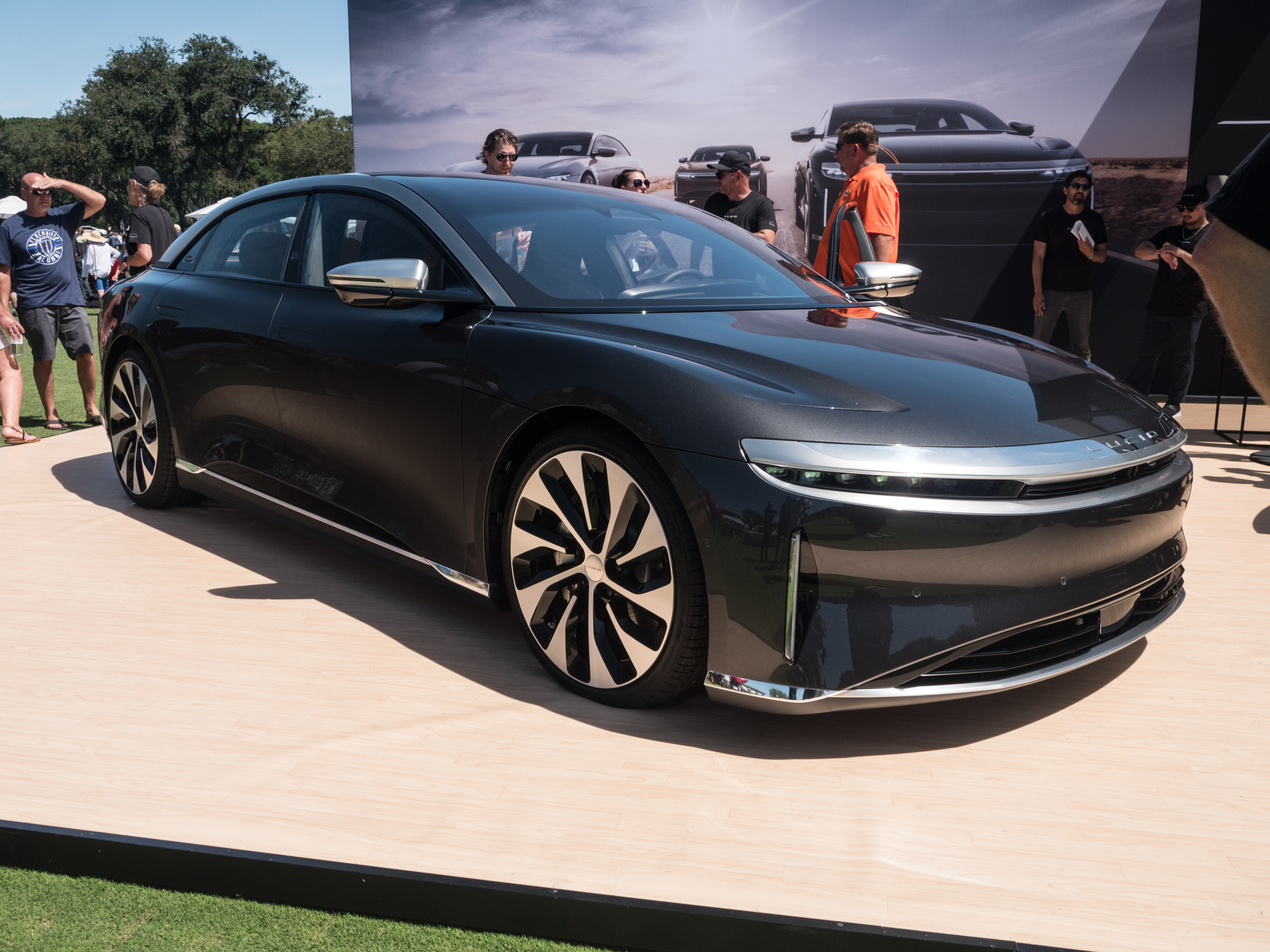 Lucid's stand at Amelia Island was rather busy every time I went past.Jonathan Gitlin
Lucid's stand at Amelia Island was rather busy every time I went past.Jonathan Gitlin Bollinger is aiming for the recreational market with its high-end electric SUV and truck but might now face stiff competition from the reborn Hummer brand.Jonathan Gitlin
Bollinger is aiming for the recreational market with its high-end electric SUV and truck but might now face stiff competition from the reborn Hummer brand.Jonathan Gitlin Bollinger's pass-through.Jonathan Gitlin
Bollinger's pass-through.Jonathan Gitlin The humidity at 7 am was intense.Jonathan Gitlin
The humidity at 7 am was intense.Jonathan Gitlin The B1 SUV drives past the judges during a parade of modern EVs.Jonathan Gitlin
The B1 SUV drives past the judges during a parade of modern EVs.Jonathan Gitlin GM chose the reborn Hummer EV to debut its new electric vehicle battery and motor family.Jonathan Gitlin
GM chose the reborn Hummer EV to debut its new electric vehicle battery and motor family.Jonathan Gitlin The Hummer is a bet that Americans will embrace EVs if they are excessive.Jonathan Gitlin
The Hummer is a bet that Americans will embrace EVs if they are excessive.Jonathan Gitlin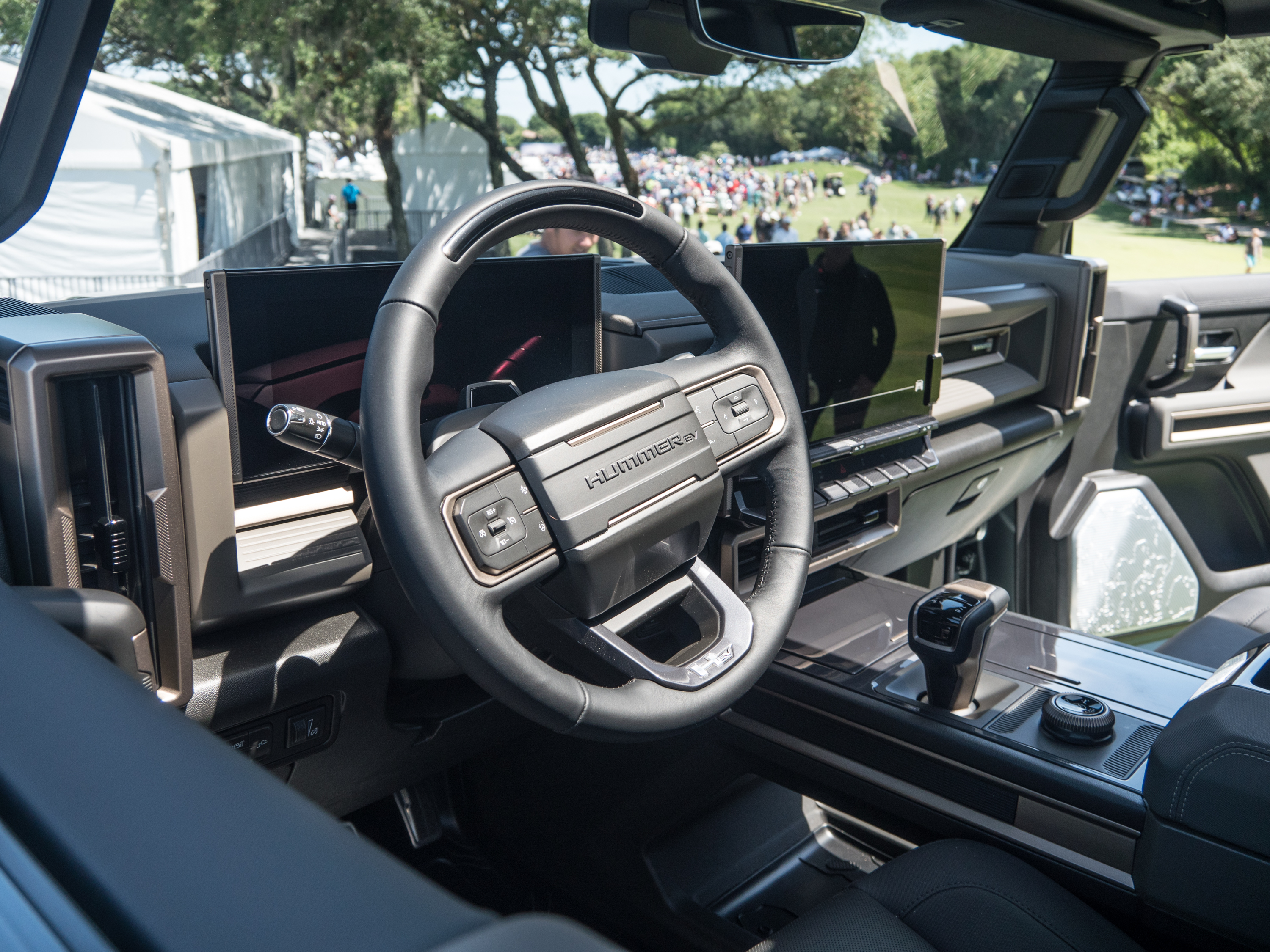 This interior will probably date, but then so too did all those interiors of 1960s cars that boomers go wild for.Jonathan Gitlin
This interior will probably date, but then so too did all those interiors of 1960s cars that boomers go wild for.Jonathan Gitlin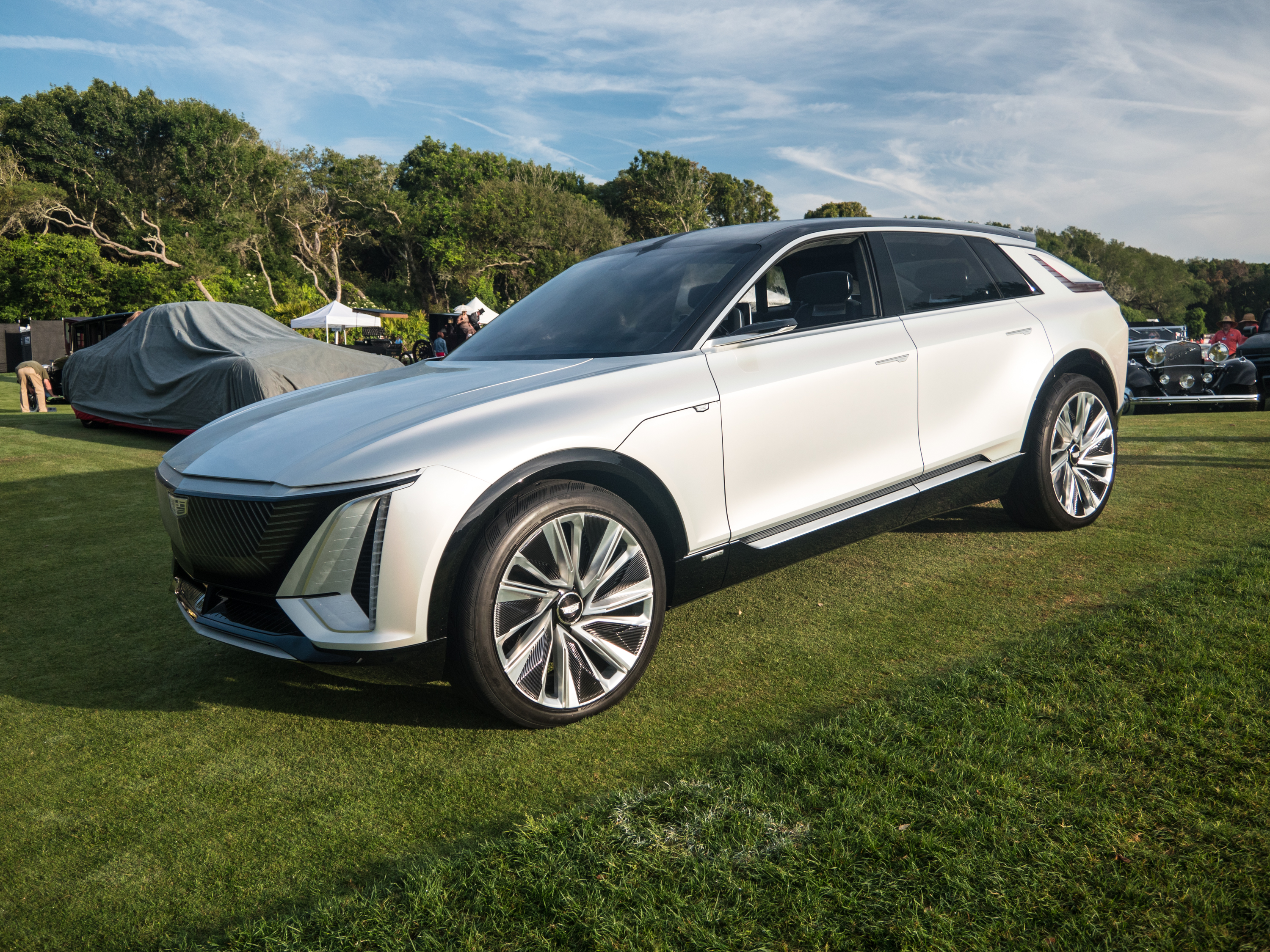 The Cadillac Lyriq will follow the Hummer EV, and at $60,000 will cost half as much.Jonathan Gitlin
The Cadillac Lyriq will follow the Hummer EV, and at $60,000 will cost half as much.Jonathan Gitlin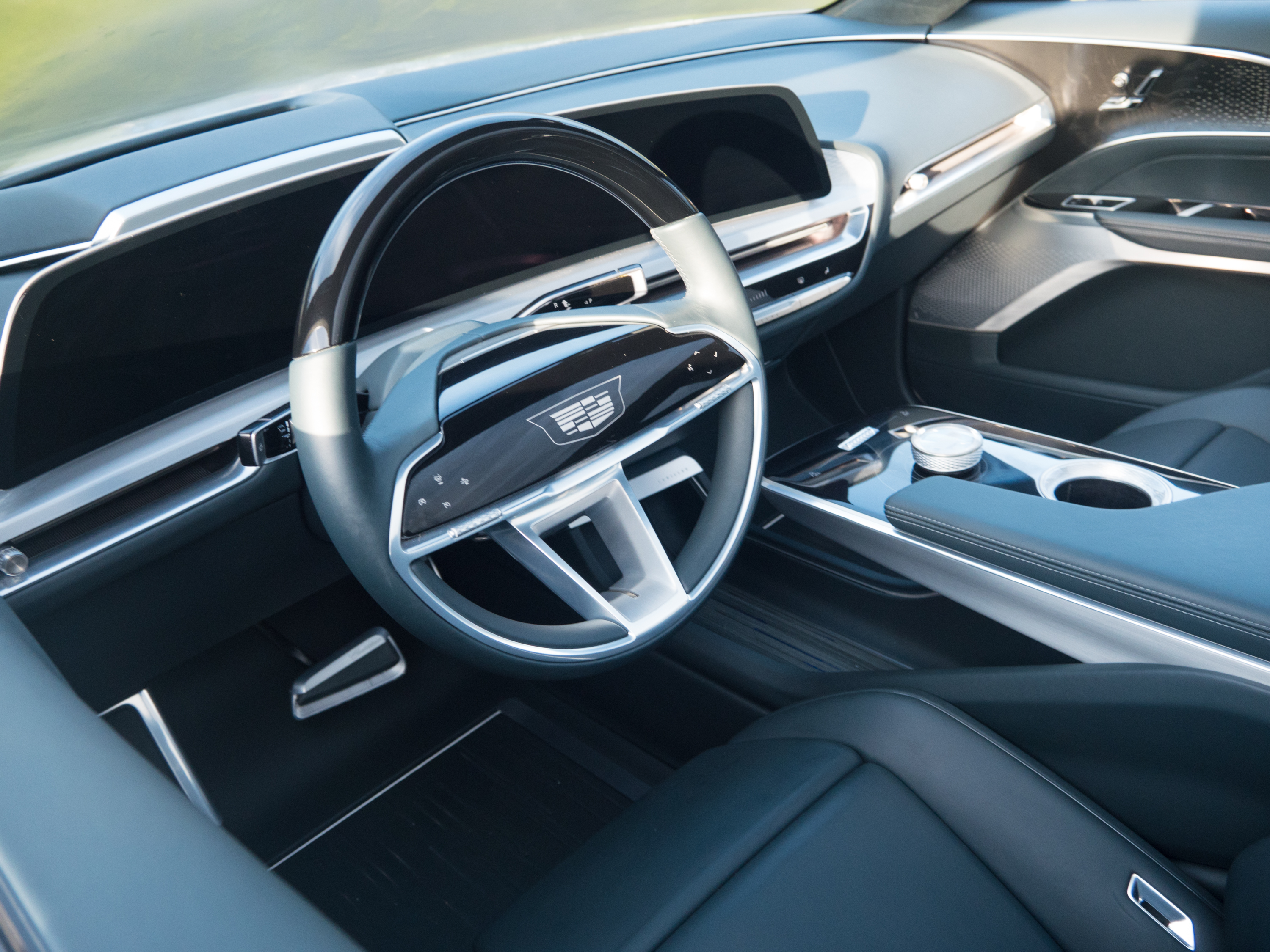 The Cadillac's interior at rest.Jonathan Gitlin
The Cadillac's interior at rest.Jonathan Gitlin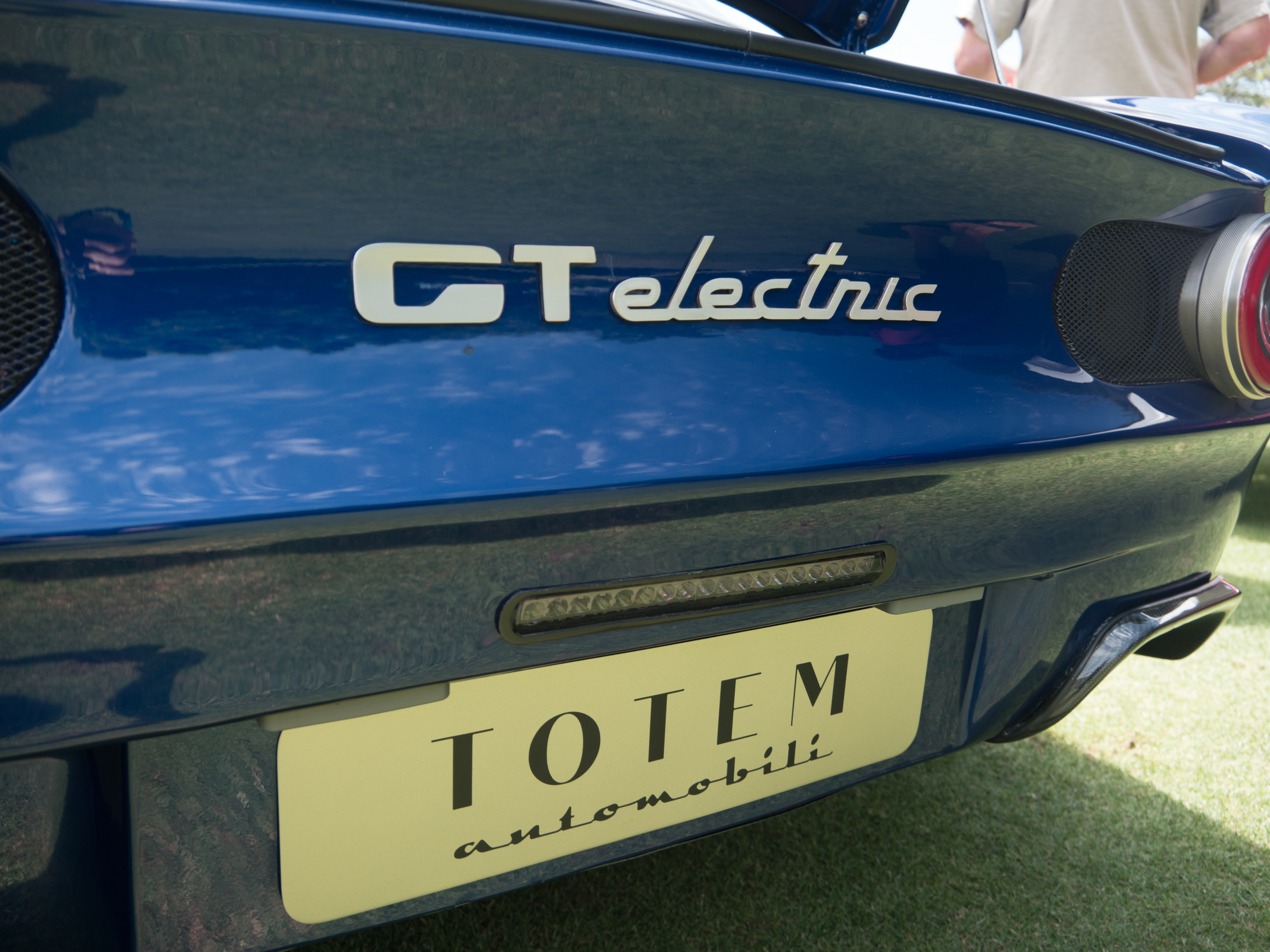 Totem Automobili's Electric GT was the surprise star of the modern EVs.Jonathan Gitlin
Totem Automobili's Electric GT was the surprise star of the modern EVs.Jonathan Gitlin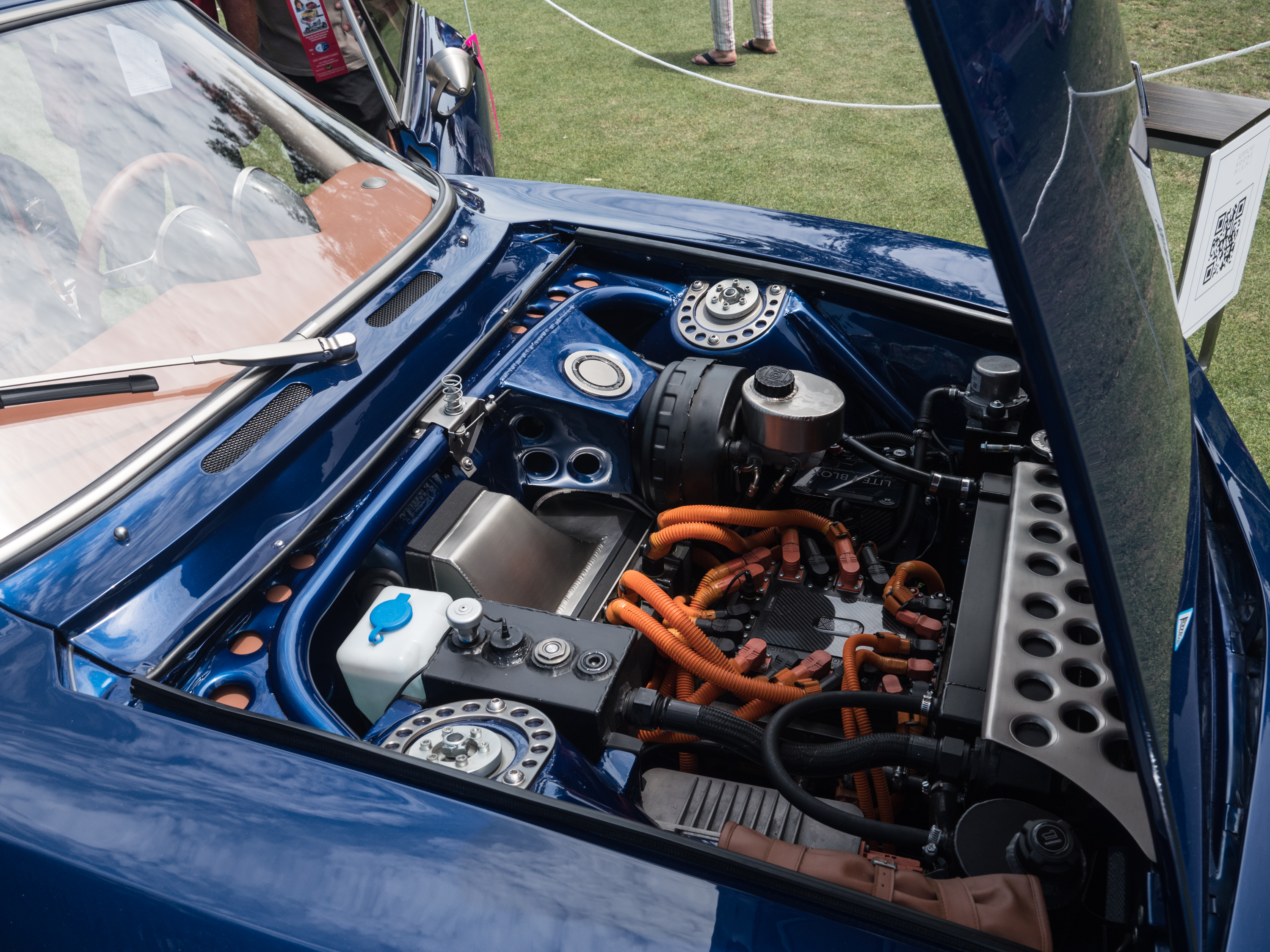 It's an electric restomod of an Alfa Romeo Giulia GT.Jonathan Gitlin
It's an electric restomod of an Alfa Romeo Giulia GT.Jonathan Gitlin I'm sorry that this is the best photo I got of the car from a distance.Jonathan Gitlin
I'm sorry that this is the best photo I got of the car from a distance.Jonathan Gitlin You can see the weave of the carbon fiber through the paint.Jonathan Gitlin
You can see the weave of the carbon fiber through the paint.Jonathan Gitlin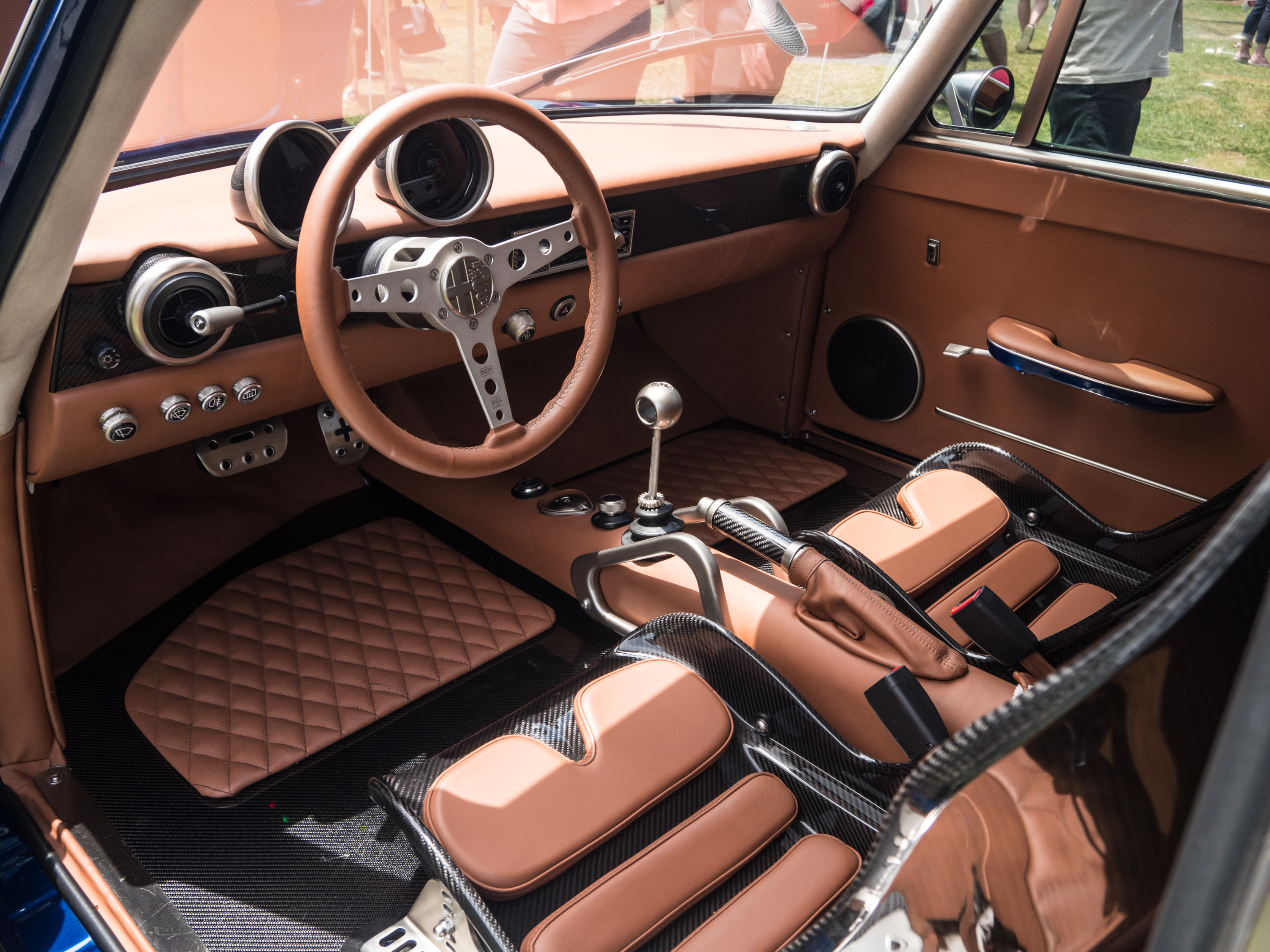 This interior is bonkers.Jonathan Gitlin
This interior is bonkers.Jonathan Gitlin The door handles are delightful.Jonathan Gitlin
The door handles are delightful.Jonathan Gitlin More carbon fiber for the grilleJonathan Gitlin
More carbon fiber for the grilleJonathan Gitlin VW brought a not-First Edition ID.4 to Amelia Island. I quite like it in white.Jonathan Gitlin
VW brought a not-First Edition ID.4 to Amelia Island. I quite like it in white.Jonathan Gitlin VW also brought this Electrobus, which it wants to restore to working order. It used to belong to the Tennessee Valley Authority in Chattanooga, where VW now has a factory that will build ID.4s.Jonathan Gitlin
VW also brought this Electrobus, which it wants to restore to working order. It used to belong to the Tennessee Valley Authority in Chattanooga, where VW now has a factory that will build ID.4s.Jonathan Gitlin Unlike the ID.4, the Electrobus used lead-acid batteries.Jonathan Gitlin
Unlike the ID.4, the Electrobus used lead-acid batteries.Jonathan Gitlin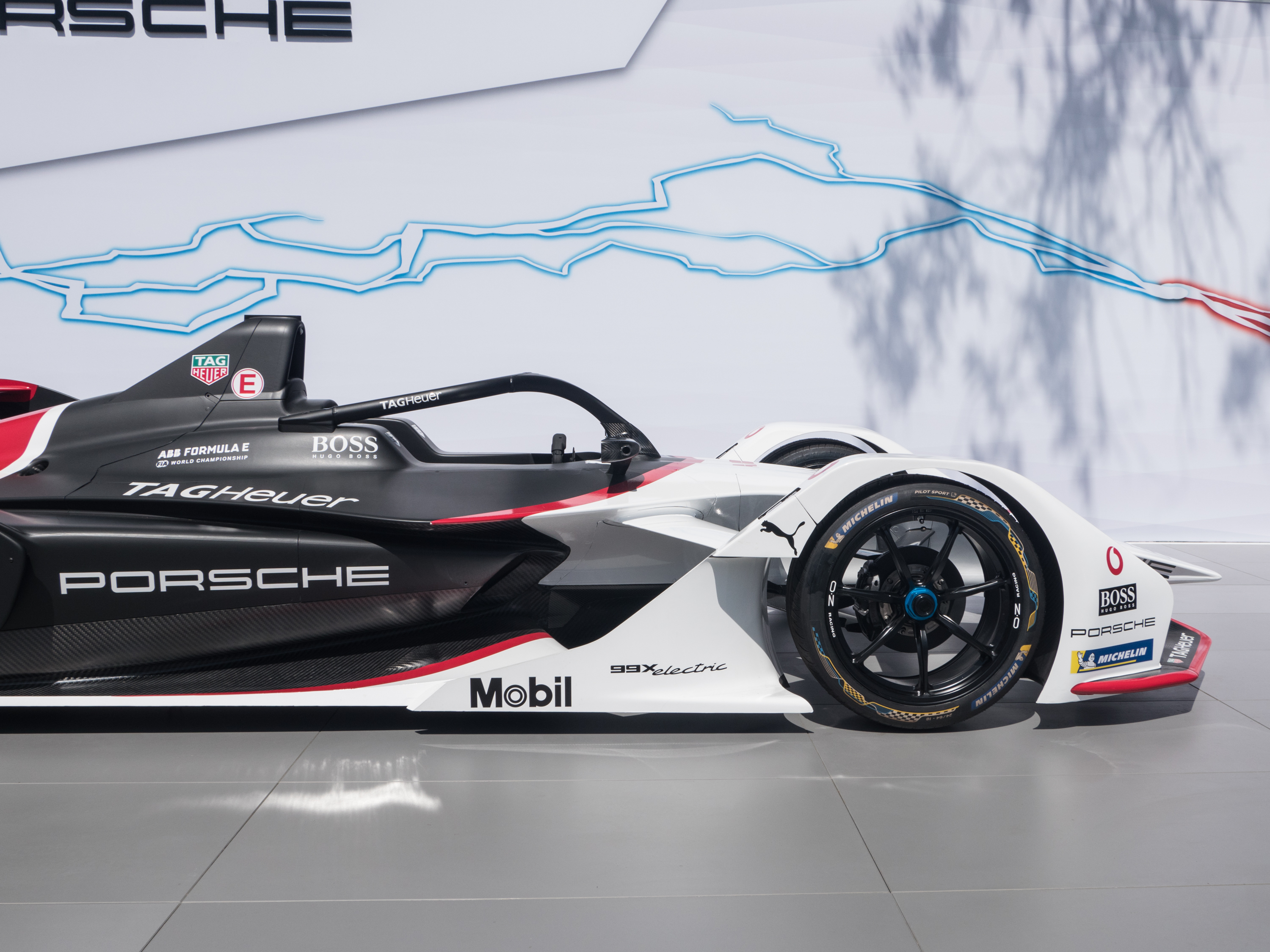 Porsche brought its Formula E car to Amelia Island.Jonathan Gitlin
Porsche brought its Formula E car to Amelia Island.Jonathan Gitlin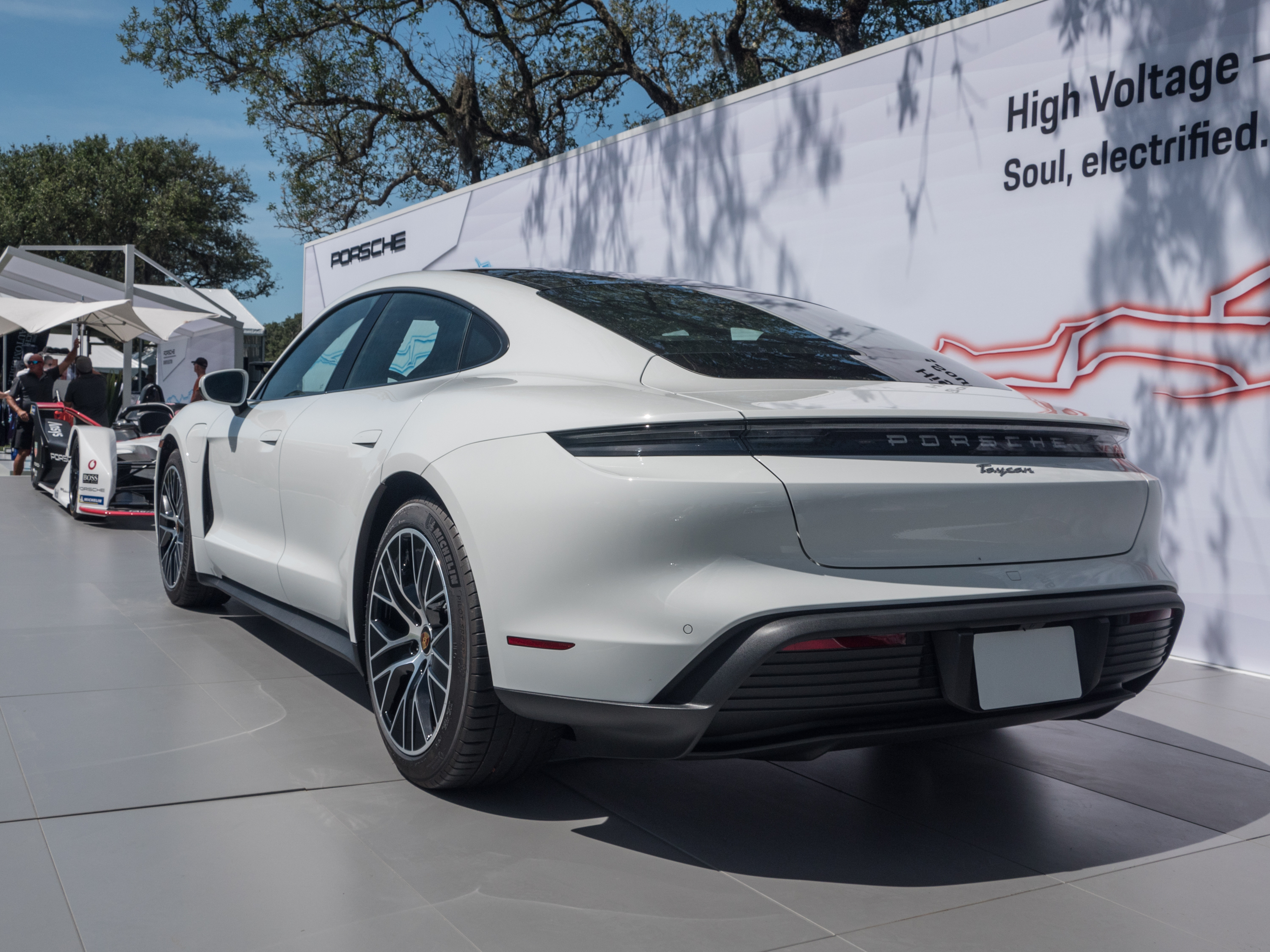 Porsche also brought a Taycan EV.Jonathan Gitlin
Porsche also brought a Taycan EV.Jonathan Gitlin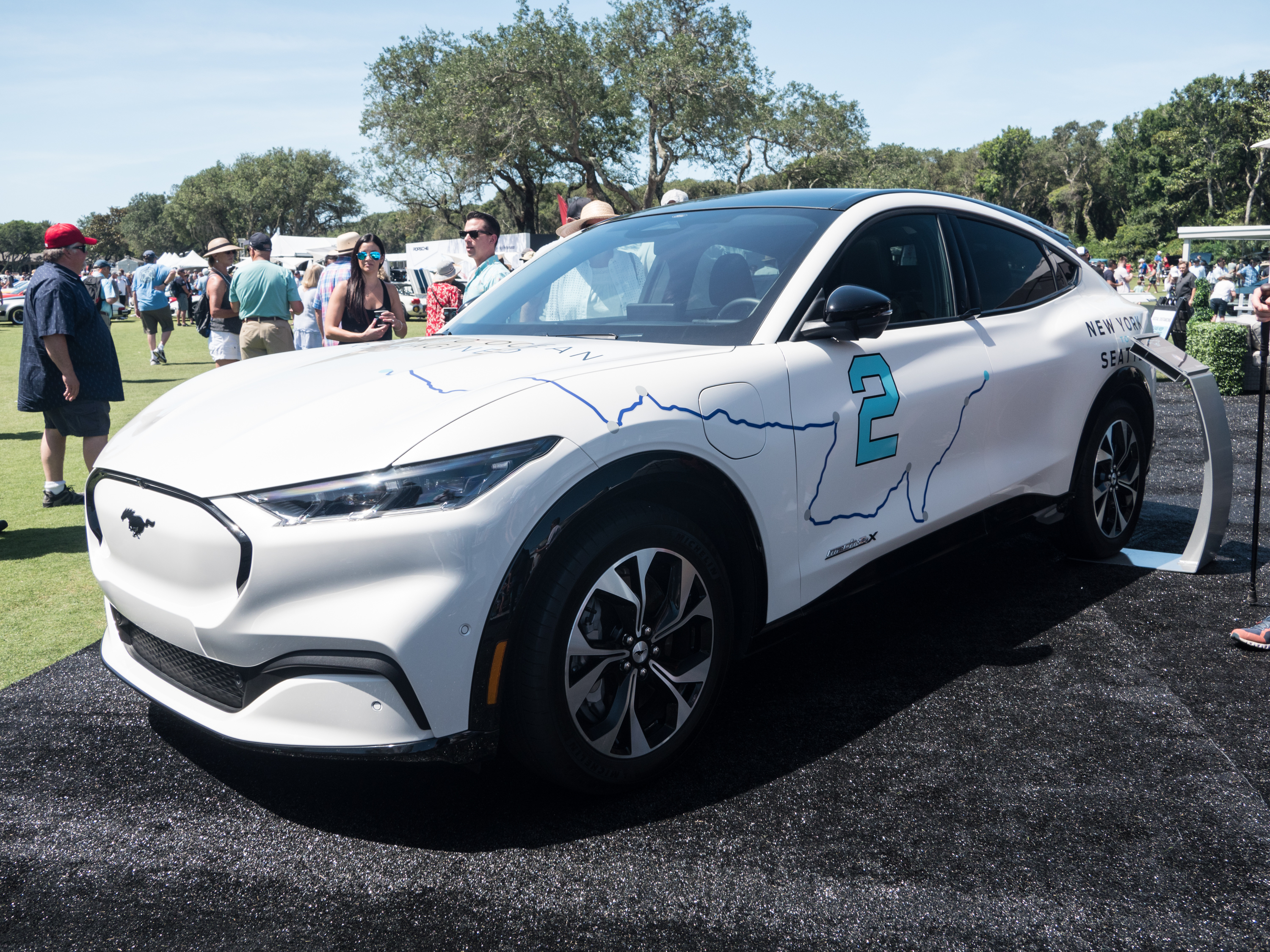 Ford is in the process of driving this Mustang Mach-E across the country. Amelia Island was one of the first stops.Jonathan Gitlin
Ford is in the process of driving this Mustang Mach-E across the country. Amelia Island was one of the first stops.Jonathan Gitlin Mini's electric Cooper SE.Jonathan Gitlin
Mini's electric Cooper SE.Jonathan Gitlin
The vintage EVs were joined with a more current crop of volt-driven vehicles. You have probably already read about our ride in the Lucid Air, and the elegantly styled (and highly aerodynamic) sedan looked perfectly at home among the assorted exotica at Amelia Island. Bollinger's display was almost as busy, and its boxy high-end EVs appeared to generate almost as much interest among the crowd as Lucid.
General Motors brought along its next two EVs, the bombastic Hummer EV (in both truck and SUV shapes) as well as the more restrained (and much cheaper) Cadillac Lyriq. We weren't able to persuade GM to give us a ride or even sit in the Hummer or the Lyriq, so all I can comment on is how they look. In that regard, the Cadillac made a great first impression.
But the one that really pushed all my buttons was the Electric GT, an electric restomod of an Alfa Romeo Giulia GT. There is allegedly some original Alfa Romeo Giulia GT chassis in there somewhere, but it has been strengthened with a roll cage and then clad in a beautiful carbon-fiber body that, if anything, improves the looks of the original. There's a 64 kWh battery pack, a single electric motor providing 580 hp (433 kW), and a hand-crafted interior that takes quite a few of the alleged 6,000 hours of work that go into the finished car. Predictably, I have yet again fallen in love with a car well beyond my means, for an Electric GT will cost you at least $523,000 (€430,000), and they'll only build a total of 20.
Listing image by Jonathan Gitlin
"electric" - Google News
June 07, 2021 at 12:15AM
https://ift.tt/3cmTAXM
Ancient electric cars meet modern EVs at Amelia Island show - Ars Technica
"electric" - Google News
https://ift.tt/2yk35WT
https://ift.tt/2YsSbsy
Bagikan Berita Ini














0 Response to "Ancient electric cars meet modern EVs at Amelia Island show - Ars Technica"
Post a Comment